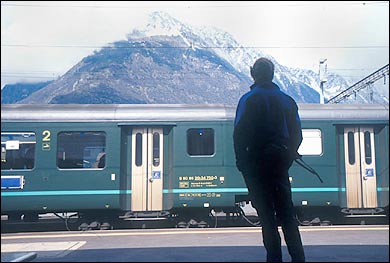It’s an infinite planet of adventurebut you want trips that inspire, excite, recharge, and revolutionize your sense of possibility. You just hit the motherlode. From trekking the classic heart of Patagonia to exploring British Columbia’s wilderness coast (with African safaris, polar epics, and Italian idylls spicing up the menu), your dream journey is here.
PLUS: The Trip of the Year winnerswe select the world’s ten best adventures.
For the daring traveler, Russia offers a fantasyland of empty mountains, crashing whitewater, and untrammeled backcountry.
Affordable satellite phones make far-flung expeditions safer. But if you never hang up, you lose the solace of the wilderness.
Contributors: Jason Daley, Kimberly Lisagor, Amy Marr, and Tim Neville
The Road to Lanceville
If your hero is a guy named Armstrong, you’ll need a hero’s ride. We pick 2004’s best.
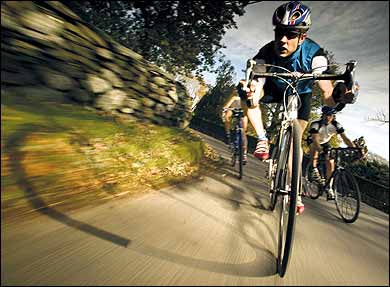
”Crash
Seen on: Giant OCR1 (this page), Cannondale Saeco, Cervélo P3 Advantages: Inexpensive, stiff, and light Disadvantages: poor shock absorption on rough surfaces Percentage of All Road Bikes Sold: 312004 Road Bike Review

WANNA RIDE JUST LIKE THE BIG TEXAN? Guess what—you’ve got company. Road-bike sales nationwide increased 35 percent between 2001 and 2002, from $187 million to $252 million, a trend that is expected to continue. Cycling-industry consultant Jay Townley confirms that Lancemania is indeed driving first-time roadies into America’s shops. But Townley, who heads up an ongoing bike-retail study, attributes the spike to “diehards who understand what they’re doing.” Maybe that’s you—or perhaps you just hammer the odd half-century with your buddies. Whatever your passion, if you’re lusting for a new mount, ���ϳԹ���‘s bike-obsessed editors have already done your homework for you, pooling a combined 63 years of saddle time to extensively test seven eminently worthy rides. You’ll find your perfect setup here, including, of course, one that goes very well with yellow.
GIANT OCR1, $999
THE PITCH A weekend workhorse for club riders, charity cruisers, and heart-rate checkers.
YOUR MONEY BUYS… At two ounces shy of 22 pounds, including Shimano pedals, the OCR1 is porkier than the other rigs on these pages, but you’re getting bomber durability and a comfortable ride at a fetching price. Giant built the frame with 6061-T6 aluminum, a gold-standard bike-tubing alloy, and added a bump-dampening carbon-fiber front fork, taller head tube, adjustable stem, and slightly longer wheelbase. The rider pedals in a somewhat upright, stable stance, which lends confidence to those who might otherwise get the jitters crouched over a carbon-fiber hot rod. To keep the price under a grand, Giant marries a mixture of Shimano and SRAM parts in the drivetrain. Meanwhile, a carbon-fiber seatpost and beefy 25cm tires—road bikes typically run 23’s—help soften the bumps.
THE RIGHT BIKE FOR YOU? Punish your shiny blue OCR1 with a decade’s worth of rain, sleet, slush, and snow, or take on 10,000 miles of road-expansion joints—it’ll still be there for you. Giant’s forgiving, compact geometry invites new roadies to build up their mileage and confidence without endless ibuprofen hits. On the other hand, in tests this bike climbed and accelerated like an 18-wheeler: slowly. “I wouldn’t attack my own shadow,” said one tester. But remember: You’re not chasing trophies, just having a blast. This bike rewards with quick handling during evasive maneuvers and near-gyroscopic stability on ripping descents. Get the OCR1 up to its ideal cruising speed, around 17 miles per hour, and you’ll never want to come back down. (800-779-2453, )
Worldwide Wild
Kenya, Tanzania, Ethopia, Zambia
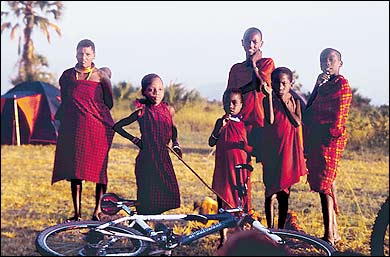
Kenya
Climbing Mount Kenya
[2004 Winner]
Kilimanjaro, Africa’s highest peak, has 2,283 feet on 17,058-foot Mount Kenya, but Kili is mainly a trekker’s mountain, whereas Kenya offers challenging technical climbing. (You need to have at least solid 5.6 skills.) On this 14-day trip, you’ll spend four to five days acclimatizing while hiking from tropical to high-alpine terrain and camping at sites with sweeping vistas. You’ll climb 15 to 20 pitches of 5.6-5.8 rock on Shipton’s Route, to one of Mount Kenya’s twin summits, 17,021-foot Nelion Peak. (The next day you can do the optional 17,058-foot Batian.) If you’re ambitious, sign up for an extension to climb Kili’s Umbwe Route, and determine for yourself which peak is the true African king.
High Point: You’ll encounter none of Kili’s midmountain Coca-Cola vendors.
Low Point: You’ll encounter none of Kili’s midmountain Coca-Cola vendors.
Travel Advisory: You’d better like your climbing partners. The hut atop Nelion barely sleeps four, and there’s hardly room to sit up.
Outfitter: Mountain Madness (206-937-8389, )
When to Go: November to March
Price: From $3,975
Difficulty: Strenuous
Tanzania
Mountain-Biking the Savanna
Being outpaced by a cheetah as you roll through the savanna isn’t out of the question on this 13-day, 300-mile ride from the base of 14,979-foot Mount Meru to the Ngorongoro Crater. You’ll bike up to 40 miles a day along dirt roads and singletrack and check in on animal hot spots like Tarangire National Park (ostrich habitat), the shores of Lake Manyara (pink flamingo country), and the edge of the Ngorongoro Crater (the whole cast of The Lion King).
Outfitter: KE ���ϳԹ��� Travel (800-497-9675, )
When to go: June and September
Price: From $2,595
Difficulty: Strenuous
Ethiopia
Trekking the Highlands
Explore Simien Mountains National Park on this 17-day adventure, more than half of which you’ll spend trekking through terraced farms, along volcanic escarpments (home to Simien fox and walia ibex), and to the summit of 15,158-foot Ras Dashen, Ethiopia’s highest peak.
Outfitter: World Expeditions (888-464-8735, )
When to Go: January and November
Price: $3,390
Difficulty: Moderate
Zambia
South Luangwa Walking Safari
On this two-week safari, you’ll hoof four to seven miles a day across the northeastern woodland savannas of 3,500-square-mile South Luangwa National Park, escorted by an armed ranger and a guide who will track giraffes, elephants, lions, hyenas, zebras, and, if you’re lucky, the rare African wild dog. In the evening you’ll wind down at comfortable bush camps like the Chikoko, on the roadless banks of the Luangwa River, and open-roofed (don’t worry—you’ll be there during the dry season) bungalows at Mwamba.
Outfitter: The Africa ���ϳԹ��� Company (800-882-9453, )
When to Go: June to October
Price: From $3,995
Difficulty: Easy
Worldwide Wild
Antarctica, Canada, North Pole
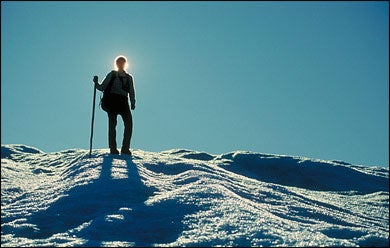
Antarctica
Following in Shackleton’s Footsteps
[2004 Winner]
Ernest Shackleton crossed the Southern Ocean to South Georgia Island in a dinghy. You’ll make the trip aboard the 295-foot, 110-passenger MS Endeavour, sailing from Stanley, in the Falkland Islands, to the west side of South Georgia in five warm, dry days, and under the capable leadership of veteran mountaineers Peter Hillary and Dave Hahn, as well as Shackleton historian Kim Heacox. It took the famed explorer only 36 hours to cross South Georgia on foot in 1916, but you’ll be glad to take five days to hike and ski the same route, roping up for the 24-mile traverse past 9,500-foot glaciated peaks. This rare 15-day trip was 12 years in the planning and is the only commercial expedition to follow Shackleton’s exact path across the island, from King Haakon Bay, on the western end, to the whaling port of Stromness, on the east coast. As you cross, look for white-camouflaged snow petrels and compare notes with Shackleton’s observations. (How far have the glaciers receded since his trip?) You’ll discover firsthand that “the Boss” was a mad genius after you ice-climb up and rappel down 4,387-foot Trident Peak—a section Shackleton did with only nails driven through his hiking boots and a hemp rope to slide along. This is a self-supported expedition, so be prepared to haul gear-laden sleds and backpacks and camp on the ice. If comfort is your priority, no one will fault you for skipping the crossing altogether and staying on board the Endeavour for the sail to the other end of the island—the traverse party will beam back daily reports and images.
High Point: Wandering through a colony of 40,000 king penguins in a remote bay accessible only by sea.
Low Point: Storms. Pack the Dramamine, because you could get 25-foot swells for five straight days as you travel to and from the Falklands.
Travel Advisory: As in the Gal‡pagos, the wildlife on South Georgia has little fear of humans, so don’t get too close to that rutting elephant seal.
Outfitter: Geographic Expeditions (800-777-8183, )
When to Go: November
Price: $9,200
Difficulty: Easy to strenuous
Canada
Backpacking Baffin Island
This 12-day, 70-mile trek passes through the rolling hills, rivers, and summer tundra of Baffin Island’s Auyuittuq (translation: “The Land That Never Melts”) National Park, established in August 2000. This is Arctic Canada at its best: a northern landscape blooming with purple mountain saxifrage, moss campion, and mountain avens. Glacier-draped peaks form granite faces like the one on 5,495-foot Mount Thor, and you can spend a day front-pointing on Turner Glacier. Or just look for eider ducks, gyrfalcons, and arctic foxes from your camp.
Outfitter: Equinox Wilderness Expeditions (604-222-1219, )
When to Go: July
Price: $2,795
Difficulty: Strenuous
North Pole
Arctic Ski Tour
(New Trip)
Follow explorers Richard Weber and Mikhail Malakhov—the only people since Robert Peary, in 1909, to have successfully traveled unsupported to the North Pole and back—on this 13-day, 70-mile nordic-skiing expedition to the top of the world. The route heads over shifting pack ice from Ice Station Borneo, around open stretches of the Arctic Ocean, and below 50-foot-tall pressure ridges of broken ice. After your accomplishment has sunk in, you’ll call home on the sat phone, then camp on the snow before choppering back down to Borneo’s heated tents.
Outfitter: Mountain Travel Sobek (888-687-6235, )
When to Go: April
Price: $17,850
Difficulty: Strenuous
Worldwide Wild
California, Maine, Alaska, British Columbia, Montana/Alberta
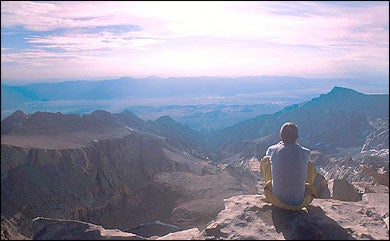
California
Backpacking the John Muir Trail
[2004 Winner]
Every mile on this classic American ramble along the spine of the Sierra has a highlight. If you’re not marveling at sheer granite cliffs or clear alpine lakes, you’ll be stopping in grassy meadows to admire the surrounding 14,000-foot peaks. The 15-day, 146-mile hike begins at Florence Lake, near Kings Canyon National Park, and travels south through some of the Sierra’s classic must-see sections, including Evolution Creek, which teems with golden trout; 13,159-foot Forester Pass, the highest pass on the Pacific Crest Trail; the high-alpine lakes of the John Muir Wilderness; and the seldom visited Golden Trout Wilderness. Why go with a guide instead of hoofing it on your own? For one thing, a small mule train will follow behind your group, carrying food, tents, and 15 pounds of your personal gear. And with Muir Trail veteran and ecologist Jay Ericson as trip leader, you’ll get plenty of beta on the trail’s history and wildlife. By the time you exit the wilderness in Sequoia National Park, you may be tempted to turn right around and head north again.
High Point: The summit attempt on 14,494-foot Mount Whitney, the tallest peak in the lower 48.
Low Point: Pack animals can be slow on the trail—expect them to show up with your flask of Jack and stash of Snickers an hour after you’ve set up camp.
Travel Advisory: Buy a California fishing license and bring your pack rod—you’ll be passing through some of the Sierra’s premier trout-fishing territory.
Outfitter: Mountain Travel Sobek (888-687-6235, )
When to Go: August and September
Price: From $3,990
Difficulty: Strenuous
Maine
Allagash Waterway Canoe Trip
On a map, the Allagash Waterway—92 miles of interconnected rivers, lakes, and ponds in northern Maine—looks like a snake that has swallowed a couple of unlucky frogs. This remote swath of North Woods wilderness will swallow you up, too, as you paddle two-person canoes for a week and set up waterside camps next to 1,222-acre Umsaski Lake and deep in boreal forests full of moose and bears.
Outfitter: Wilderness Inquiry (800-728-0719, )
When to Go: July
Price: $750
Difficulty: Easy
Alaska
Ski-Mountaineering Powder Steeps and Glaciers
(New Trip)
Your mission on this two-week tour of the remote Neacola Mountains, about 100 air miles southwest of Anchorage in Alaska’s Lake Clark National Park and Preserve, is all about first ascents and descents. First you’ll ski through unnamed peaks before deciding, along with your guides, which spires to summit. Then you’ll make base camp on a glacier and set out for downhill action rivaling that of any heli-ski operation.
Outfitter: Alaska Alpine ���ϳԹ���s (877-525-2577, )
When to Go: May
Price: $4,000
Difficulty: Strenuous
British Columbia
Sea-Kayaking Queen Charlotte Strait
Well north of the waterways of Johnstone Strait, you’ll paddle tandem kayaks for six days among the sheltered bays and islands of Queen Charlotte Strait, a wild archipelago full of humpbacks and bald eagles, with B.C.’s snowcapped mountains in the distance. After dodging whale flukes, seals, and curious porpoises, you’ll set up camps on the pebbly, driftwood-strewn beaches of secluded islands like Bell, Hurst, and Nigei.
Outfitter: Sea Kayak ���ϳԹ���s (800-616-1943, )
When to Go: August and September
Price: $1,050
Difficulty: Moderate
Montana/Alberta
Biking and Hiking Glacier, Banff, and Jasper
This eight-day international ride-athon not only covers 42 miles of Glacier National Park’s Going-to-the-Sun Road but also takes in 177 miles of Banff and Jasper national parks’ Icefields Parkway for a firsthand look at the massive glaciers that spill out of the Canadian Rockies. In between, you’ll stay in stately park lodges and hotels and hike the Plain of Six Glaciers Trail.
Outfitter: Bicycle ���ϳԹ���s (800-443-6060, )
When to Go: June to September
Price: From $2,576
Difficulty: Moderate
Worldwide Wild
Italy, Greece, France, Scotland
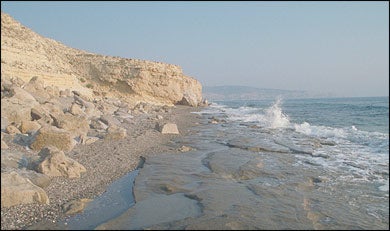
Italy
Biking the Southern Hills
[2004 Winner]
An east-to-west odyssey across the sole of Italy’s boot, from Bari to Lamezia Terme, weaves through untrammeled Puglia, Basilicata, Campania, and Calabria—regions as beautiful as Tuscany and the Amalfi Coast, minus the tourists. You’ll start the 12-day trip in Puglia, with its ancient beehive-domed limestone dwellings, or trulli, and cycle about 50 miles a day over rolling countryside to the cave city of Matera, a World Heritage Site. After visiting Greek, Roman, Byzantine, and Norman ruins, hit the wilds of Pollino National Park, and wander the beaches of Cilento Peninsula, which juts into the Tyrrhenian Sea. You’ll also check out archaeological digs at ancient sites, see fresh mozzarella di bufala stretched by hand, and end the days with bacchanalian feasts and luxe rooms in cliff-perched palaces.
High Point: The ten-mile descent to Cittadella del Capo and your swanky digs for the night: the Palazzo del Capo, a five-star seaside resort.
Low Point: A fiery tongue from an irresistible pepperoncini, the Calabrese hot pepper.
Travel Advisory: Take it easy on the Cirò; wine or you might find the roadside donkeys keeping pace with you the next day.
Outfitter: Ciclismo Classico (800-866-7314, )
When to Go: June
Price: From $3,795
Difficulty: Strenuous
Greece
Inn-to-Inn Sea Kayaking, Hiking, and Yoga on Crete
(New Trip)
During eight days on Crete’s southern coast, perfect your morning sun salutation in an ancient Venetian fortress overlooking the Mediterranean, paddle through Gaudiesque caves, and hike the Samaria Gorge, Europe’s version of the Grand Canyon. You’ll sleep seaside at quiet family-run inns and lounge on white-pebble Sweetwater Beach, where clear springs flow from the rocks and bathing suits usually get left on the shore.
Outfitter: The Northwest Passage (800-732-7328, )
When to Go: May and October
Price: $2,495
Difficulty: Moderate
France
Hiking from Mont Blanc to the Mediterranean
(New Trip)
On this 15-day north-south traverse of the French Alps, hike more than 80 miles on sections of the GR5 trail, from Mont Blanc to the Côte d’Azur. Traveling up to ten miles per day, traipse through Vanoise and Mercantour national parks—home to ibex and golden eagles—and over 9,000-foot mountain passes to snooze in snug inns and mountain refuges. Eventually, the glacial valleys and granite spires give way to sunny Mediterranean villages.
Outfitter: Wilderness Travel (800-368-2794, )
When to Go: June to September
Price: From $3,795
Difficulty: Strenuous
Scotland
Highlands Off-Road Coast to Coast
This eight-day bike ramble winds 230 miles—from Loch Hourn, on the west coast, to Montrose, on the east. With plenty of climbs and bangin’ descents, you’ll pedal 35 miles a day along drovers’ roads and forested singletrack, skirting the Cairngorm and Grampian mountains and crossing the River Dee before hitting the North Sea. Your toughest day: climbing 2,507-foot Corrieyairack Pass. At night, luxuriate at charming inns, sampling Scotch whisky.
Outfitter: Saddle Skedaddle (011-44-191-265-1110, )
when to go: June and August
Price: From $915
Difficulty: Strenuous
The Road to Lanceville
Litespeed Solano, Specialized Roubaix Comp, & the Cannondale Saeco
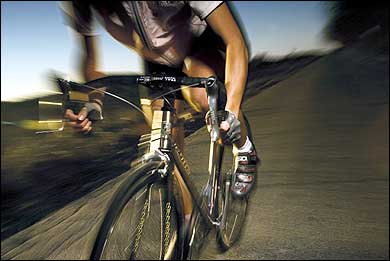
”Crash
Seen on: Litespeed Solano Advantages: Light and durable, with a beautiful patina Disadvantages: Expensive Percentage of All Road Bikes Sold: 152004 Road Bike Review

2004 Road Bike Review

LITESPEED SOLANO, $2,795
THE PITCH Reenact Breaking Away aboard this deluxe titanium long-hauler.
YOUR MONEY BUYS… A more affordable version of the flagship Litespeed Vortex, from which this steed borrows geometry and design. The Solano offers the company’s new G.E.T. (geometrically enhanced titanium) tubing. Huh? Get close and you’ll see that the top tube is three-sided in cross section, the down tube is teardrop-shaped, and the seatstays are ovalized. What this high-tech design means to you is improved strength and responsiveness. Litespeed spec’d out the rest with a Shimano Ultegra drivetrain, plus carbon-fiber wheels and fork, to make an 18-pound-four-ounce road warrior.
THE RIGHT BIKE FOR YOU? This is an inspiring ride. Roadies who find themselves pulling the peloton along a straightaway will fully appreciate the Solano’s weight-to-stiffness ratio and traditional racing geometry. Sprinters will rejoice over the stubby chainstays and powerful feel. Happiest, however, will be century riders, long-distance devotees who’ll swoon over this rig’s ultraplush ride. Are there flaws? A few. The Solano likes to hold a straight line, so racers and fitness riders who charge down mountain passes may have to wrestle her a tad. Also, this bike features ugly bar tape and one of the least comfortable saddles we’ve ever straddled. But both are quick fixes on a ride that will deliver years of joy on your favorite stretch of blacktop. (423-238-5530, )
SPECIALIZED ROUBAIX COMP, $2,600
THE PITCH Everything you need in a speed rig.
YOUR MONEY BUYS… Specialized lovingly spec’d out this 17-pounder for race-day duty with carbon fiber in the frame, seatpost, headset, and cranks. The slick-shifting Shimano Ultegra 27-speed drivetrain offers ample teeth for hill climbers and flatland sprinters alike. Meanwhile, durable Mavic Ksyrium Equipe wheels are a nice touch for heavyweight rookie riders still working their way down to racing trim.
THE RIGHT BIKE FOR YOU? The Roubaix manages to balance two conflicting agendas: a smooth ride—previously the domain of heavy or flexy frames composed of steel or titanium—and the rock-solid stiffness needed to efficiently transfer power from body to bike. It rolled like butter in tests, and we expect it will indefinitely keep you cranking comfortably and strong, even after mile 70 of your district road championships. Why? Specialized tucked six small elastomers—rubber shock absorbers that soak up all the cracks and potholes that would otherwise rattle your spine—inside the fork, seatstays, and seatpost. When the call goes out for speed, just think, “Faster,” and you’re there; the bike is so responsive, it’ll feel like it’s glued to your body. (408-779-6229, )
CANNONDALE SAECO, $5,000
THE PITCH This two-wheeled missile will spirit you to just about any podium this side of Paris.
YOUR MONEY BUYS… Cannondale’s lightest bike ever is also its zippiest. The secret is Optimo, a new house-brand aluminum alloy that the Connecticut-based company says is 15 percent stronger than the 6061-T6 metal widely used on other bikes. This gave engineers the option of either creating a stiffer frame without adding heft or shedding weight without sacrificing strength. They went for option two—and came up with a remarkably rigid bike that weighs just 15 pounds. Cannondale also saved weight by hollowing out the bike’s cranks and axle, then tricked out the rest of the ride with lightweight Mavic wheels, Campagnolo shifters, brakes, and derailleurs, and carbon-fiber Cinelli handlebars.
THE RIGHT BIKE FOR YOU? It is if you’re in the market for a purebred racer. Climb, sprint, bomb a descent—your Saeco will never cry uncle. The rear triangle and oversize bottom bracket shell withstood the pounding of even our weightier (over 190 pounds) testers. Of course, as a racer the bike isn’t exactly plush—more F1 than SUV—but the shock-dampening, hourglass-shaped seatstays eat up a lot of the sting. Campagnolo’s top-shelf components are glass-smooth. Finally, with gold-plated cranks and Saeco team logo, this one is a real head-turner. If your performance is even half as good as your bike looks, you’ll be team captain in no time. (800-245-3872, )
The Road to Lanceville
Jamis Satellite, Cerv�lo P3, & the Trek Madone 5.9
”Crash
Seen on: specialized Roubaix, Trek Madone (this page) Advantages: Great weight-to-strength ratio and cool looks Disadvantages: Can be unstable at high speeds—and pricey Percentage of All Road Bikes Sold: 132004 Road Bike Review

2004 Road Bike Review

2004 Road Bike Review
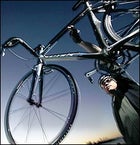
JAMIS SATELLITE, $680
THE PITCH Road-bike pricing comes down to earth.
YOUR MONEY BUYS… This 22-pound-14-ounce bike is designed to grow alongside a cyclist’s skills and fitness. The Jamis strategy: Give buyers a Reynolds-steel frame and carbon-fiber fork, then bolt on heavier, lesser-quality parts: wheels, brakes, and drivetrain.
THE RIGHT BIKE FOR YOU? Yes, if you want a reliable introduction to pavement without dipping into your 401(k). The Satellite rides like a bike that costs twice as much. Out on the road, the feel was so plush and the riding position so relaxed, the Satellite reminded us why steel is a superior material for soaking up bumps in the road. The hidden price of that delicious ride is weight: The extra five pounds under your saddle doesn’t seem like much—until you reach a hill. (800-222-0570, )
CERVÉLO P3, $3,599
THE PITCH This one’s aerodynamically perfected for slicing through air and blowing past everybody else.
YOUR MONEY BUYS… The airfoil-shaped frame and seatpost, the flat carbon-fiber fork and V-shaped wheel rims—all are standard tri-bike designs. But the P3’s rear wheel cutout is not. By tucking the wheel into a sweeping, 15-inch-long curve in the frame, Cervélo effectively created an airfoil that moves air over the hoop with less turbulence. Cervélo’s aerobars and Shimano’s top-of-the-line—and lightest—Dura-Ace drivetrain fill out the complete speed package.
THE RIGHT BIKE FOR YOU? The P3 delivers straight speed and little else. Crediting the frame’s low body posture and the P3’s overall ultra-efficient design, one of our testers shaved two minutes off his usual 20-mile test ride without even trying. Of course, riders will have to make some sacrifices in comfort, handling, and hill-climbing ability. The tight aluminum frame shot every bump right up our spines, its hypertwitchy feel made sprinting and traffic adventures in maintaining control, and the extremely low aerobar height made long, steep hills a pain in the back. But for triathletes who race and train on empty stretches of asphalt, this shouldn’t be a problem; it could even prove a psychological boost: When you ride a bike built for breaking speed records, you’ll push yourself harder to see how fast you can really go. (866-237-8356, )
TREK MADONE 5.9, $5,000
THE PITCH You, too, can own Lance Armstrong’s winning wheels.
YOUR MONEY BUYS… Trek engineers are so reluctant to share their carbon-fiber shake-and-bake recipe, they haven’t even filed details of the process with the U.S. Patent and Trademark Office. Whatever the black magic, it’s allowed the company to craft an absurdly feathery (15 pounds 12 ounces), aerodynamic bike that climbs and sprints with no energy-sapping lateral flex. Trek topped things off with the trickest of components, including Shimano’s top-shelf Dura-Ace brakes and drivetrain, super-stiff Bontrager Race X Lite wheels, and a titanium-and-leather San Marco saddle. Lance rode a stock version of this bike in the 2003 Tour de France.
THE RIGHT BIKE FOR YOU? If the Madone doesn’t put you at the front of the peloton on a sickening incline, it’ll at least make you feel like you belong there. The tight, responsive frame transfers every muscle twitch into forward motion. Nothing under 16 pounds should feel this solid, but the Madone inspires confidence even during descents on sketchy mountain roads. Go ahead—stand up and stomp on the pedals: Trek’s proprietary rear-triangle design will withstand all the torque you can dish out. The Bontrager wheels and carbon-fiber frame broadcast every bump to your body, but the Madone is still surprisingly comfortable for a pure race rig. Shimano Dura-Ace components are precise, light, and as lustrous as the frame they adorn. (920-478-4678, )
The Pulse
Q&A, Doggie Fitness, & Do and Don’t
Q & A WITH
PAUL SCOTT
How long does it take to see real gains in endurance?
—Mike Wood, La Jolla, California
SIX WEEKS IS YOUR ANSWER. This time frame recognizes that endurance comes via two separate activities. One is long, slow distance to get your muscles and joints used to the miles. The other is intermittent sprint sessions to condition your body to working at higher heart rates and to increase your cardio efficiency. This holds true for elite athletes. “I find that it takes six weeks to get my endurance back after taking time off,” says Peter Reid, winner of last year’s Ironman Hawaii triathlon. “The first three weeks, I build up the volume. Then I recover for a week, and then finish by ramping up the volume for the last two weeks.” After a month and a half, you should be able to chart your gains by watching your pace increase even though your heart rate stays the same.
[DOGGIE FITNESS]
Percentages of dogs and their owners, respectively, who lost weight when sharing an exercise routine such as walking, running, or hiking
SOURCE: THE IAMS COMPANY
Do & Don’t Spring Training
DO make your outdoor cardio workouts 20 percent longer than the length of your indoor treadmill or spinning workouts.
DON’T immediately run on sidewalks or roads. Use trail running to ease your legs and back into pavement-pounding shape.
DO ease off on the duration and frequency of your strength-training sessions as your time outdoors increases, or you’ll wear yourself out quickly.
DON’T assume that you’ll be able to keep lifting the same weight after you dial back the weight training.
SOURCE: WAYNE WESTSCOTT, DIRECTOR OF FITNESS RESEARCH AT THE SOUTH SHORE YMCA, QUINCY MASSACHUSETTS
Worldwide Wild
New Zealand, Fiji, Australia
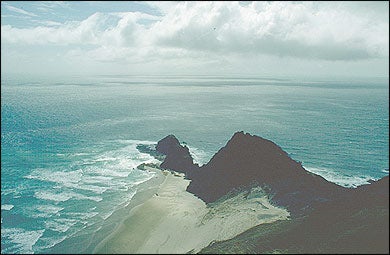
New Zealand
Sailing and Diving the Upper North Island
[2004 Winner]
Cruise the island-studded Hauraki Gulf for eight days on a 58-foot luxury yacht, exploring the northern tip of the North Island and pausing between scuba dives to fish for snapper and hike through bird sanctuaries. Spend your nights in posh wilderness lodges; enjoy five-star meals featuring Akaroa salmon; and expect perks like helicopter transport to Tutukaka, one of seven overnight stops. And what could tempt you away from, say, a 19th-century colonial villa on a private beach? Only the promise of what lies offshore: Poor Knights Islands Marine Reserve, where a maze of coral tunnels and caverns teems with a wild array of aquatic life. Explore wrecks like the Rainbow Warrior, where multicolored critters have turned the Greenpeace ship (sabotaged by the French secret service in 1985) into a psychedelic artificial reef.
High Point: Diving an ocean ravine as dozens of stingrays glide by overhead.
Low Point: Sailing a starboard tack while you’re perched on the port head.
Travel Advisory: The South Pacific and the Tasman Sea meet at the tip of the North Island, so expect mild to wild water.
Outfitter: First Light Travel (011-64-9-360-8320, )
When to Go: Year-round
Price: $7,700
Difficulty: Moderate
New Zealand
South Island Alpine Course
In this weeklong tent-to-hut excursion in the Southern Alps, you’ll helicopter to the edge of the Bonar Glacier for two days of mountaineering and snow-craft instruction. (You’ll spend one night in a self-made snow cave, so pay attention!) After a two-day traverse of 7,730-foot Mount French, ditch your crampons and hike the valleys of Mount Aspiring National Park.
Outfitter: World Expeditions (888-464-8735, )
When to Go: December
Price: $2,190
Difficulty: Strenuous
Fiji
Exploring the Wild Side
(New Trip)
Witness fire walking in highland villages, raft the Class III Upper Navua through a rainforest dotted with waterfalls, and snorkel the coral gardens of the Mamanuca Islands on this 15-day romp through Fiji’s remotest regions. You’ll spend nights in beach lodges and tribal villages.
Outfitter: Asia Transpacific Journeys (800-642-2742, )
When to Go: June and August
Price: $4,195
Difficulty: Moderate
Australia
Exploring Aboriginal Lands
After flying from Darwin over coastal grasslands, bed down in bare-bones camps in Garig Ganuk Barlu National Park, a swath of Aboriginal land between the Cobourg Peninsula and the Kimberley Plateau. Native guides lead you on walks to ancient pictographs, swimming holes, and waterfalls.
Outfitter: Journeys International (800-255-8735, )
When to Go: August
Price: $3,195
Difficulty: Moderate
Made to Order
The Custom-Trip Transformation
The promise of Himalayan ecstasy beckons from the cover of a slick brochure. It would be the perfect trip if it didn’t involve sharing a tent with a stranger. And, well, maybe if it started a few weeks later.
Fear not, picky traveler: The adventure industry hears you. Responding to a surge in the demand for custom itineraries, a growing number of outfitters now offer design-it-yourself tours. At Mountain Travel Sobek, 15 percent of the trips are custom jobs. And last year, Butterfield & Robinson assigned half a dozen staffers to its new Bespoke division, which customizes adventures for a quarter of the company’s clientele. “It’s part of an overall trend toward individualism,” says B&R marketing director Cari Gray. The biggest factor is clients’ desire to pick their own dates, she says, along with wanting to travel with family and friends. The best news is—as you’ll see from the sample trips below—creating your own private outing doesn’t have to come at a premium.
+ When a customer asked Olaf Malver, “chief exploratory officer” of Explorers’ Corner (510-559-8099, ), to design a kayak trip that follows a river from its headwaters to the ocean, Malver set his sights on Siberia. The resulting itinerary is a two-week paddle down the Zhupanova River. The 15-day adventure has been so successful, it’s now a regularly scheduled group trip. The $5,100 price tag remains the same.
+ For serious road cyclists, Iron Donkey Bicycle Touring (866-255-3637, ) designs high-mileage itineraries on Ireland’s back roads. Owner Tony Boyd, a Belfast native, just finished mapping a 29-day, 1,500-mile route that runs over emerald hills to pasture-fringed villages. Riding a section of that route in a one-week trip would cost a group of eight $690 per person, including maps, luggage transfers, and B&B accommodations.
+ Founded in 2002 by former investment banker Emmanuel Burgio, Blue Parallel (800-256-5307, ) offers high-end custom trips to South America. Its outdoorsy Peru, Chile, Argentina, and Brazil itineraries can be packed with private perks like after-dark tours of Machu Picchu. A weeklong jaunt runs $4,000 to $6,000 per person.
+ If you prefer high altitude to high end, sign on with the Patagonian Brothers (info@patagonianexpd.com, ). Damian and Willie Benegas are identical twins and veteran mountaineers who can guide you up everything from a Patagonian icefield to Everest.
Stealth Health
The Latest in Smart Microbe Management
You’re yearning to see foreign vistas and exotic wildlife. But some exotic (and invisible) wildlife is yearning to see you in the worst way. The best defense against the diseases of travel are, as always, knowledge and prevention. First, consult the up-to-date warnings posted on the Centers for Disease Control and Prevention () and World Health Organization () Web sites. And peruse our quick-and-dirty lowdown on the most prevalent bugs and how to safeguard against them.
Malaria
Each year, 300 to 500 million people contract this mosquito-borne protozoan disease, and about one million die. In recent years, strains of the disease have developed a resistance to the prescription drug chloroquine and, in some pockets, resistance to other prophylactics.
Hot spots: West Indies, Southeast Asia, South America, and Africa
Symptoms: Cold flashes, hot flashes, jaundice, and anemia
Prevention: If you’re heading into chloroquine-resistant areas, ask for quinine, Malarone, or Mefloquine—but beware the psychological effects of the latter, which can include scary hallucinations.
West Nile Virus
This mosquito-borne virus, most prevalent in the summer and fall, hit the United States for the first time in 1999. In 2003 it infected at least 8,912 people, killing 211.
Hot spots: The U.S., Africa, and the Middle East
Symptoms: Flu-like symptoms that, in severe cases, lead to inflammation of the brain or viral meningitis.
Prevention: Like it or not, there is no vaccination—slather on the deet.
Hepatitis A
Hepatitis A is contracted through contact with the stool of an infected person, so when you’re traveling in areas with questionable sanitation, religiously follow the “Boil it, cook it, peel it, or forget it” rule. Also, drink only bottled water, and wash your hands often.
Hot spots: Central and South America, Eastern Europe, and the United States
Symptoms: Malaise, weight loss, jaundice, dark urine
Prevention: There is a vaccination, but it’s best to get a combined vaccination for hepatitis A and B as well as typhoid.
Dengue Fever
This mosquito-transmitted virus is like catching a nasty case of the flu.
Hot spots: 50 to 100 million cases of dengue occur each year in Central and South America, Central Africa, India, Southeast Asia, Oceania, and even parts of the U.S.
Symptoms: A fever that causes a severe frontal headache, joint and muscle pain, and a rash—and lasts seven to ten days.
Prevention: A vaccine is under development, but until then, stay mosquito-proof.
Yellow Fever
Another mosquito-borne virus, yellow fever has been a scourge on South America and sub-Saharan Africa for decades. It can range in severity from a flu-like syndrome to severe hepatitis.
Hot spots: The Panama-Colombia border region and Central and West Africa
Symptoms: Headache, fever, jaundice
Prevention: A live vaccine provides protection for up to ten years and is almost 100 percent effective.
SARS (Severe Acute Respiratory Syndrome)
In 2003, there were 8,098 confirmed cases of this virus worldwide, and China has already confirmed new cases this year.
Hot spots: China, Hong Kong, and Southeast Asia
Symptoms: Chills, headache, and fever, which can develop into a severe respiratory illness like pneumonia.
Prevention: The only way to avoid SARS is to avoid exposure—keep your eye on the news and the above-mentioned Web sites.
Ebola
Ebola is the T. rex of infectious diseases, an unstoppable hemorrhagic fever that kills 55 to 95 percent of those infected.
Hot spot: Central Africa
Symptoms: Bleeding, chest pain
Prevention: Stay out of Ebola’s path. Check WHO’s outbreak reports before setting out to to reenact Livingstone’s African epic.
Worldwide Wild
The Trip of the Year
Peru
Three Ranges Exploratory Trek
The northern reaches of the Peruvian Andes have for centuries been prime real estate for those who want to get lost—or at least remain unfound. The Cordilleras Raura, Huayhuash, and Blanca—three ranges consisting of massive blocks of nearly impenetrable ice and rock—are the setting for this intense 25-day mule-supported exploratory trek. You might recognize some of the scenery: British mountaineer Joe Simpson’s epic tale of survival, as recounted in the book and recently released documentary film Touching the Void, unfolded in these mountains. Starting in the Cordillera Raura, a two-day drive from Lima through Peru’s central plains, you’ll explore the eastern fringes of this ancient range on a four-day trek, camping in verdant meadows or along glacial moraines. Rarely will you be lower than 13,000 feet. Next you’ll cross into the Cordillera Huayhuash—a formidable mass of skyscraping peaks that include Peru’s second-highest, the serac-scarred 21,765-foot Yerupajá;. The air will seem as thick as llama wool when you reach 9,932-foot Huaraz, the Chamonix of Peru, for a two-night rest at an inn. Set out the following morning into the 112-mile-long Cordillera Blanca—one of the largest concentrations of 20,000-foot peaks in the world—for more than eight days of trekking past Inca ruins, through paperbark forests, and across 15,000-foot passes. From your campsite, you’ll have plenty of time to ogle the fluted pyramid of 19,511-foot Alpamayo.
High Point: The views of Huayhuash National Park—from your 14,350-foot campsite—will take away what little breath you still have.
Low Point: The tropical mountain-climbing paradox: high-altitude chills, intense equatorial sun. Slather on the sunblock and lip balm during the day, but don’t forget the down jacket and booties for camp at night.
Travel Advisory: Make your peace with switchbacks before signing up for this trip. You’ll climb no fewer than 11 passes in 18 days.
Outfitter: Wilderness Travel (800-368-2794, )
When to Go: May
Price: From $3,795
Difficulty: Strenuous



